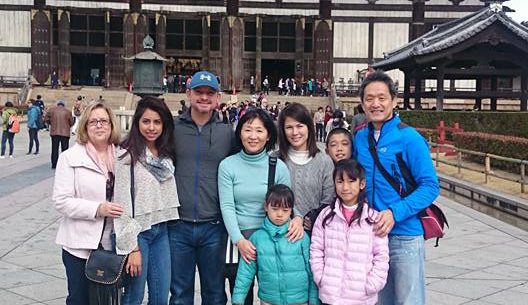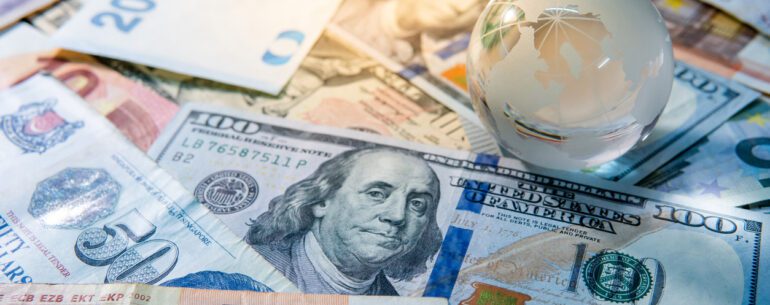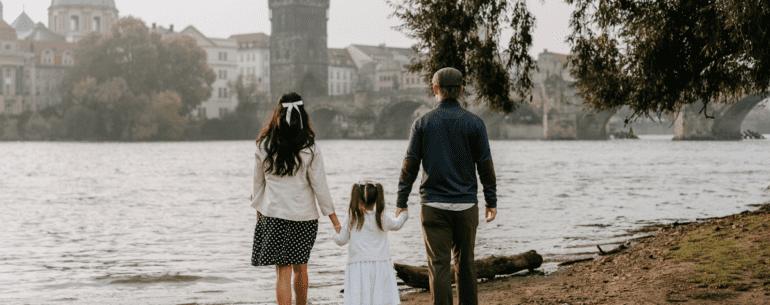We were 6,700 miles from home facing centuries-old cultural norms and codes of etiquette. Being in Japan is like traveling through 11 centuries of history.
Endless peaceful gardens and ancient Buddhist temples adorn the island country whose capital, Tokyo, is teeming with busy streets and vibrant culture. I wondered how they keep a country of 127 million people so clean.
Japan could be the prototype for efficiency and cleanliness. With all its sophistication, politeness and cleanliness, I was concerned we wouldn’t know how to act!
“Never assume your criteria of behavior and judgment are universal. Not only is an inability to adapt to another culture the height of barbarism, it puts you at a disadvantage.” – Robert Greene
Preparing for Japan
Fortunately, my best friend, Chase Lambin, lived in Japan and was generous with advice. He signed a Japanese Major League Baseball contract to play for the Chiba Lotte Marines in 2008. It would’ve been cool to see him play in a sold-out Chiba Stadium. But if you read my previous post, you’ll know traveling overseas isn’t where the bulk of my paychecks were going in my twenties.
A few weeks before flying into Tokyo, I texted Chase from South Korea: “Hey bud, headed to Japan soon. Any norms/customs I should know about?”
His reply was longer than expected. Oh man. I already knew there was a lot to remember from my own research (me googling: “How to behave in Japan”).
My results: “Don’t be rude, loud or aggressive; be indirect to avoid confrontation.” Easy enough— avoid being the negative stereotype of an American.
Here was Chase’s advice:
- Don’t drink your beer until everyone has theirs in front of them, and the host has a chance to say “kampai!” It means “cheers”
- Don’t jab your chopsticks into rice and leave them sticking up
- It’s ok to eat sushi with your hands, but don’t slather it in soy sauce; always eat the entire piece in one bite
- If offered a business card, use two hands to receive it, then study it like it’s a rare jewel
- Shake hands only if offered by them; otherwise, bow
- When walking in busy areas, always follow the flow of traffic
- Bring a gift to dinner; there are small gift boxes and desserts all over Japan (Shochu is a good alcohol gift)
- Always take your shoes off indoors
- Don’t tip at restaurants
- Say “Thank you” a lot; pronounced “Ah-dee-got-o”
Japan Itinerary
A week before departing South Korea for Japan, we had no itinerary. I didn’t even know where to start.
Chase put me in touch with his friend, Hank, who said, “Stay in Tokyo two nights, then take bullet train to Osaka. I will pick you up at train station in Osaka and show you around Osaka and Nara.”
Beautiful! My buddy’s Japanese best buddy would become a fast friend of mine.
From Osaka, we would train to Kyoto, then hope to get a glimpse of Mount Fuji on our way back to Tokyo. We’d spend our last days at Tokyo Disneyland before flying to Hong Kong.
For a first-time visitor to Japan, this was a great itinerary—detailed at the end of this article.
48 Hours in Tokyo
We tried to see as much of Tokyo as possible in 48 hours. Overwhelmed with the number of hotel options, I decided on Shinbashi district. Shinbashi means “new bridge” in English. A bridge was built there across the Shiodome River in 1604, but the river has since been filled in with concrete freeway. Great location.
From our hotel, we walked to Ueno Park to see cherry blossoms and climbed the Eiffel Tower-inspired Tokyo Tower. In the afternoon, we had lunch in the animation & video game district called Akihabara, then walked through several parks & shrines. Our day finished with an elevator ride up Tokyo Skytree for sunset. I should’ve called this section of article 36 Hours in Tokyo.
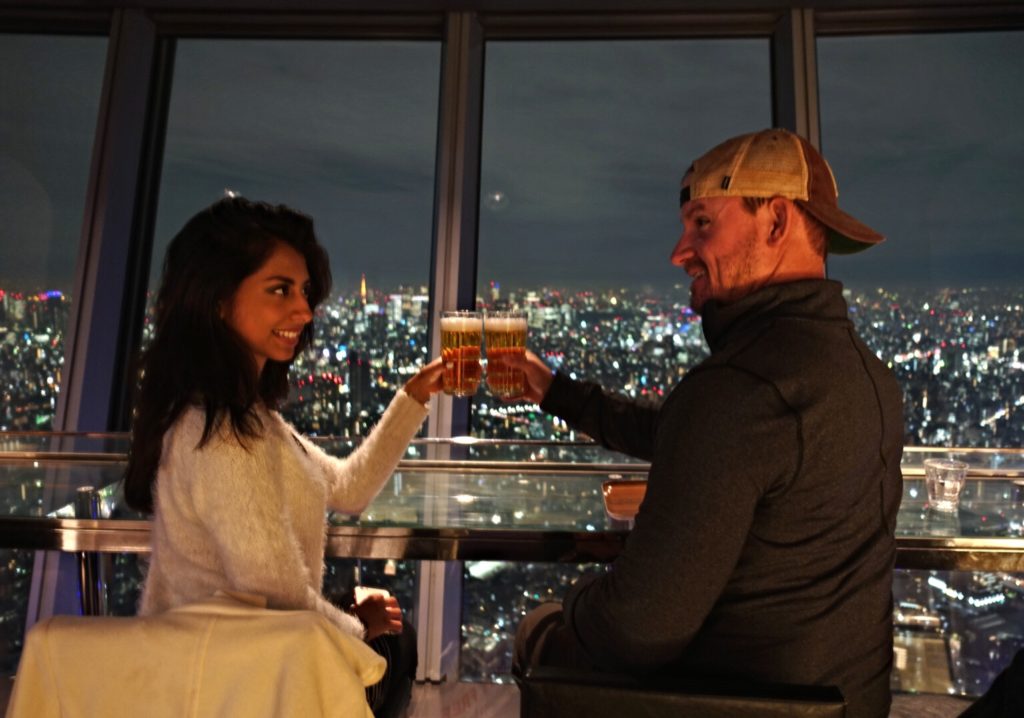
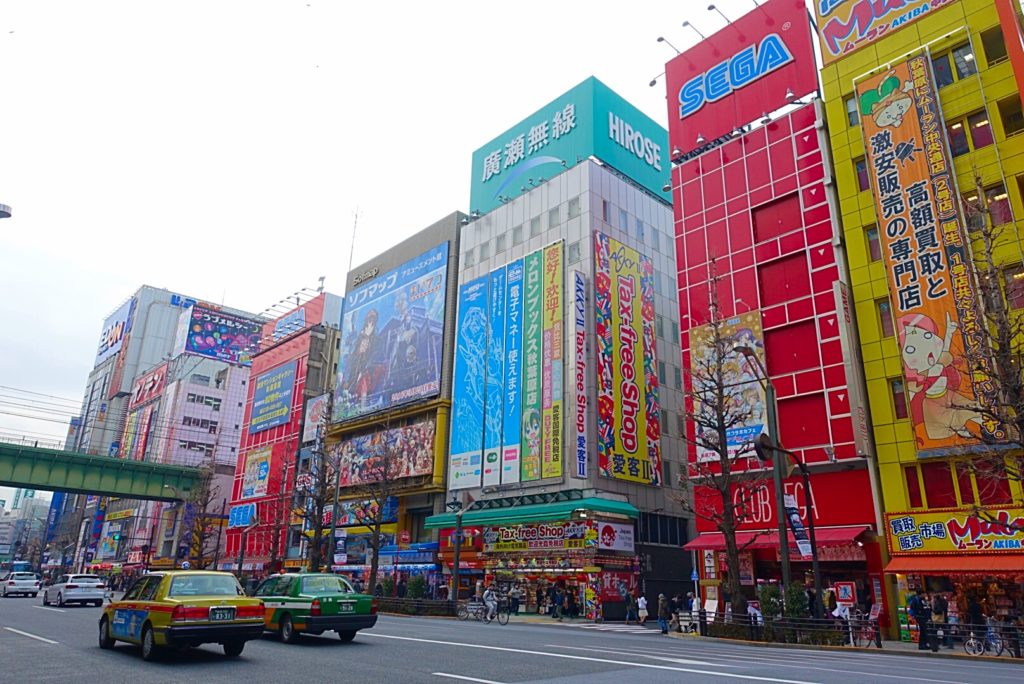
After two nights in Tokyo, we left for Osaka. Mass transit in Japan a is cool experience, allowing you to to maximize time like no other place I’ve been.
The fastest way to get from Tokyo to Osaka is by riding the Shinkansen, colloquially known in English as the bullet train.
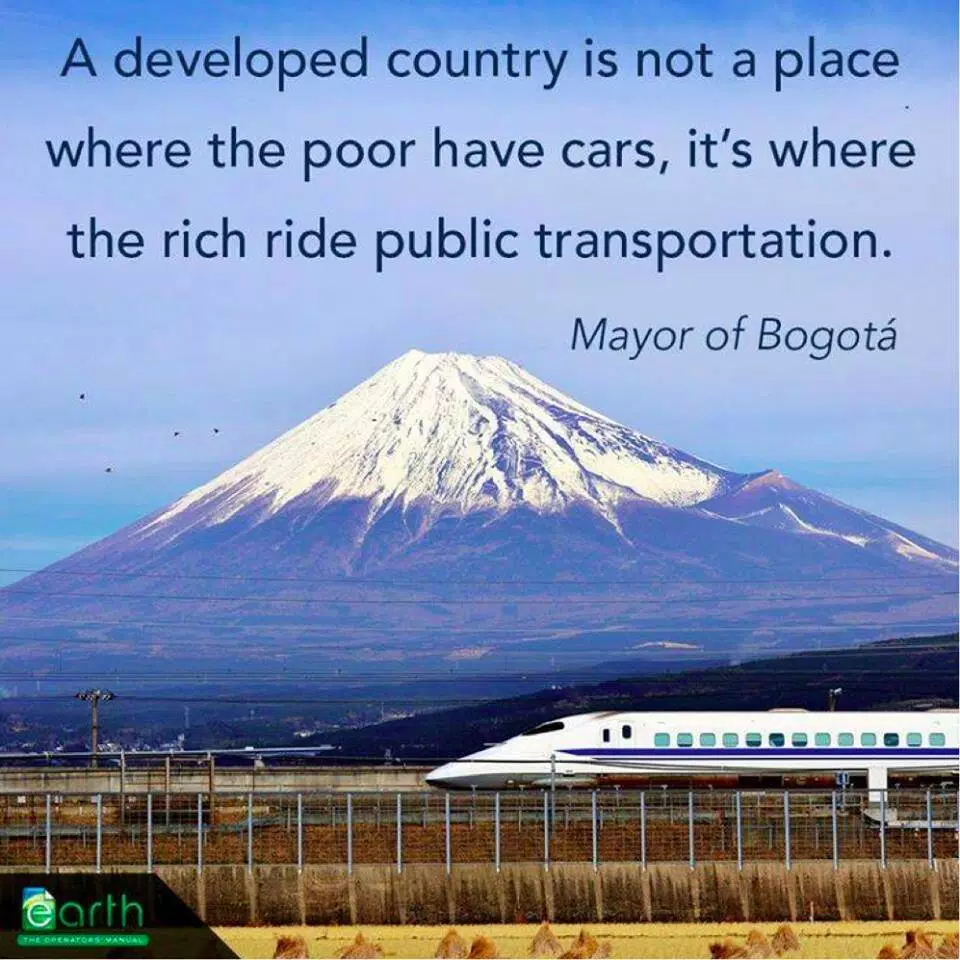
Nervous in Nippon (Osaka & Nara)
My college baseball coach liked to say nervousness was indicative of one’s lack of preparation. To prepare myself in case of culture shock (and to avoid making an ass of myself), I studied Chase’s bullet points on the bullet train like I was cramming for a final exam.
Hank was waiting at the station when our train arrived in Osaka—I could see him in the distance as we rolled our suitcases. My internal dialogue had me rehearsing how to greet him Don’t stick your hand out. If you see his hand, grab it. If he doesn’t offer his hand, then bow. But not too much.
Then my brain hit overdrive What if my bow is awkward. Or appears insincere. Or my timing is off.
“Your world will expand for every step you dare to take outside your comfort zone.” – Maria Erving
After pulling my luggage through the turnstiles, I looked up to see Hank’s out-stretched hand. Whew! I felt the weight of a rikishi (Japanese sumo wrestler) off my shoulders.
I introduced my mom and Miriam, then we drove to our new friend’s home for an authentic Japanese dinner with his family & friends.
The first thing I noticed walking in Hank’s front door was his baseball memorabilia. There were autographed pictures, bats and batting gloves. An entire section of a wall was dedicated to Chase.
There was a framed jersey worn by Josh Whitesell, a former teammate of mine in the Kansas Jayhawk League, who played MLB in the US & Japan. I started taking pictures of the pictures on the wall so I could send home.
Hank’s wife, Emi, cooked up a delicious cuisine. We ate, drank beer, laughed and took group photos I’ll always cherish.
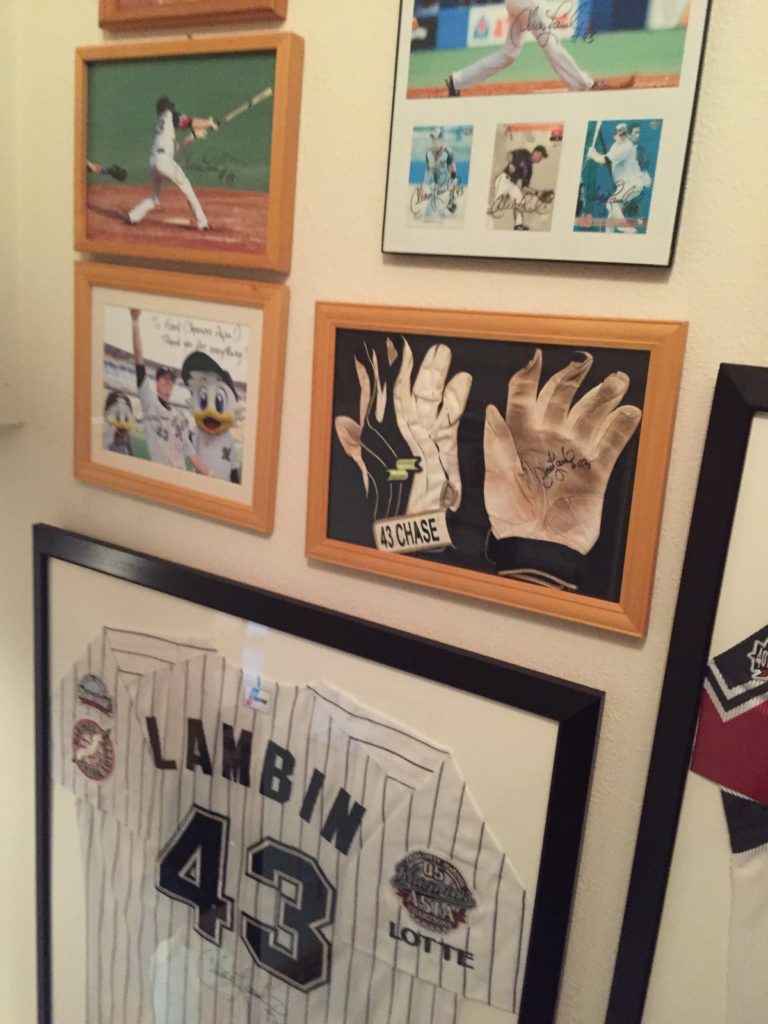
There was one thing Chase didn’t mention. After scouring the web for an hour trying to find an affordable hotel in Osaka, I thought I’d found a steal for under $80 USD a night. Imagine my embarrassment when our gracious host dropped us off at a “love hotel.”
I doubt it’s customary for a man in his 30s to book rooms with his mom & girlfriend that rent by the hour. When I booked online, I thought “Adults Only” meant a more peaceful sleep (no kids). Oh well. We were “ballin’ on a budget,” and that “love hotel” was priced well below other options. Not only was it inexpensive, they offered free cigarette lighters and condoms at the check-in desk. Whoops!
In the morning, we went with Hank, Emi & friends to Todai-Ji (temple that houses the world’s largest bronze statue of the Buddha) and Kasuga Taisha Shinen Manyo Botanical Garden in Nara. After lunch, we headed back to Osaka to see Osaka Castle (originally built in 1583) and the city’s famed entertainment district, Minami (Namba).
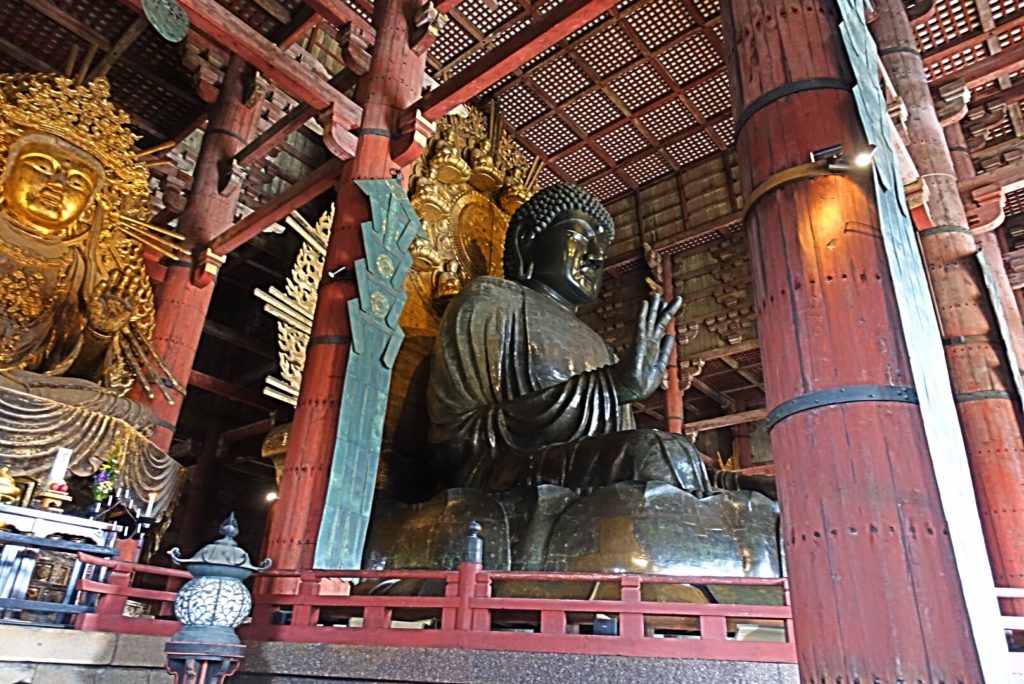
2 Days in Kyoto
Kyoto is believed to hold 20% of Japan’s national treasures. It was largely spared from bombing during World War II. There are Buddhist temples, Shinto shrines and a modern cityscape. Much of the city is walkable with excellent public bus transit.
Day 1 in Kyoto we toured shrines and visited the famous geisha hangout known as Gion.
Day 2 we went to Bamboo Forest.
I was responsible for booking everything, so of course, I inadvertently got us into another “love hotel.”
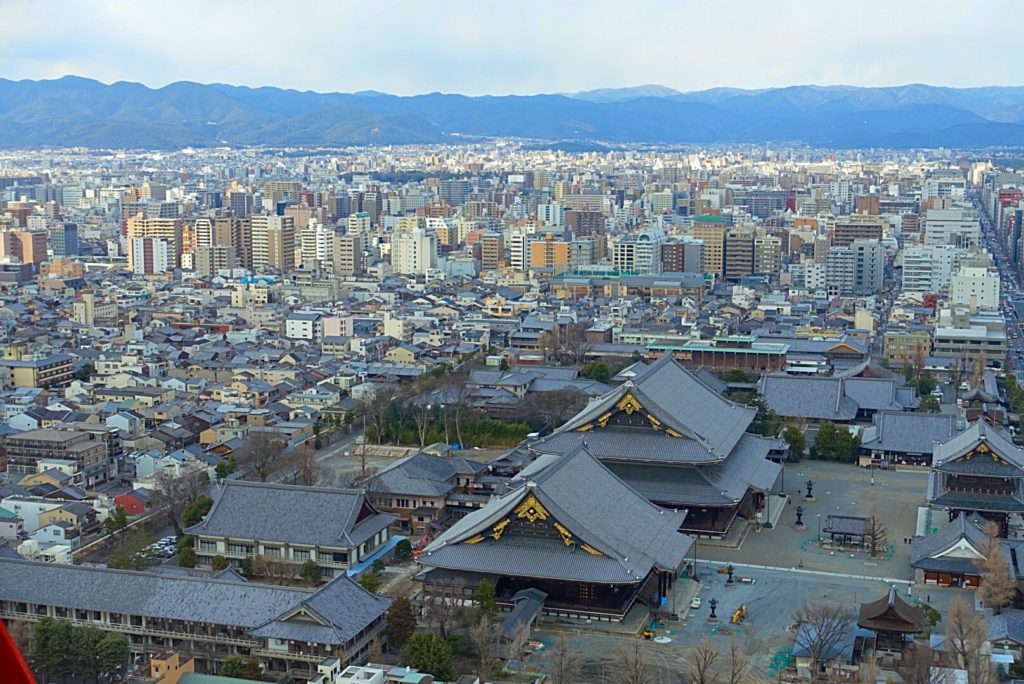
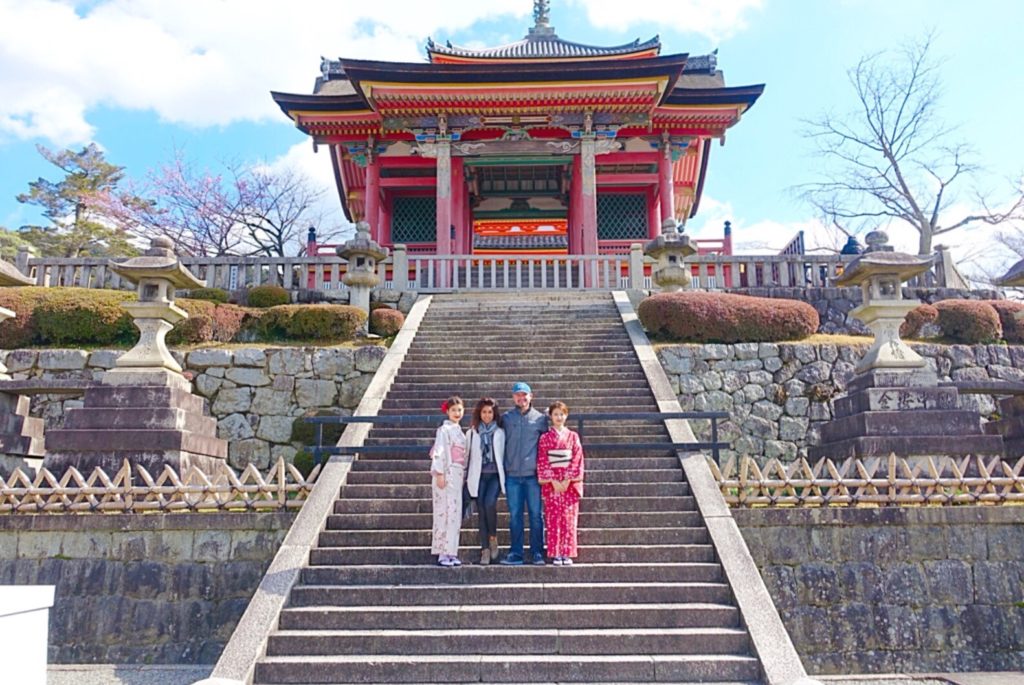
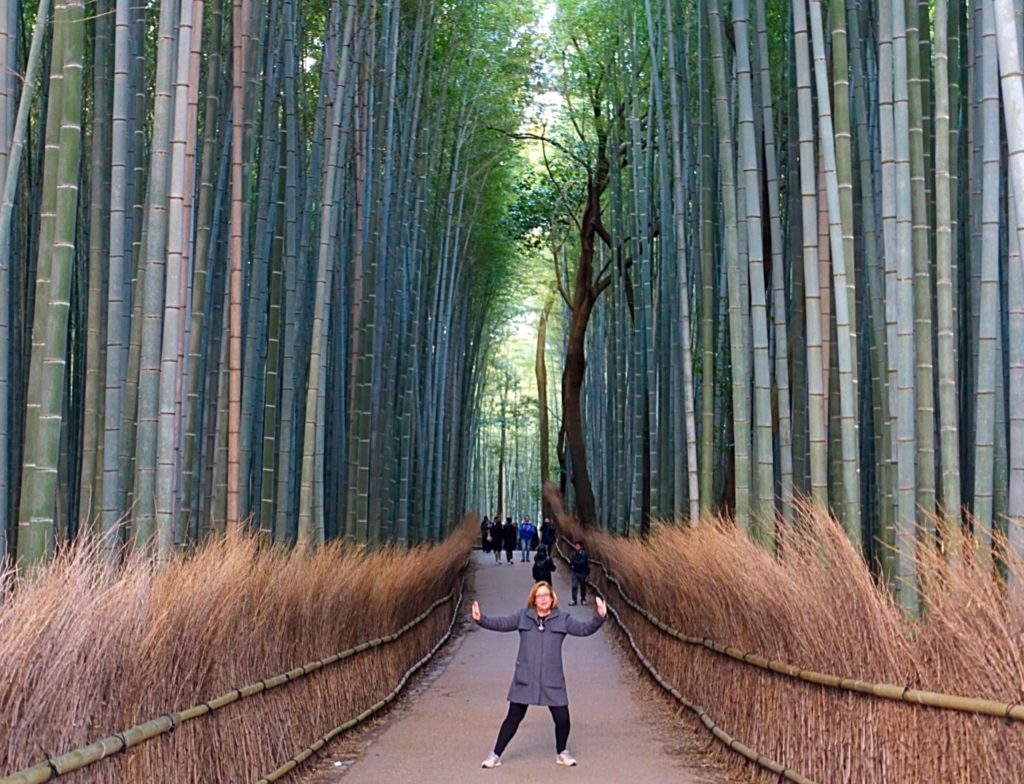
Chiba
We spent our last days in Japan at Tokyo Disneyland. By our fourth hotel stay, I finally learned how to decipher “love hotels” from places you’d want to take your mom.
Finding a last-minute room near Disney proved impossible. We were forced to stay 15 miles north of Disneyland in Chiba Prefecture (prefectures are like “states” in the U.S). Our room had expansive views of Tokyo Bay and we could see inside Chiba Stadium where Chase played his home games.
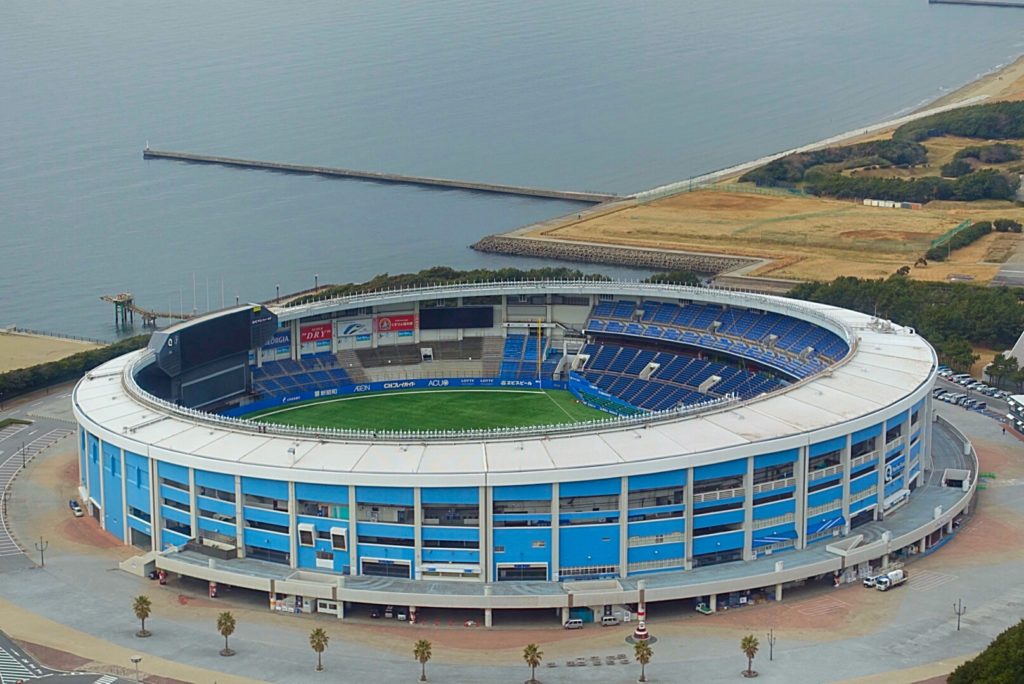
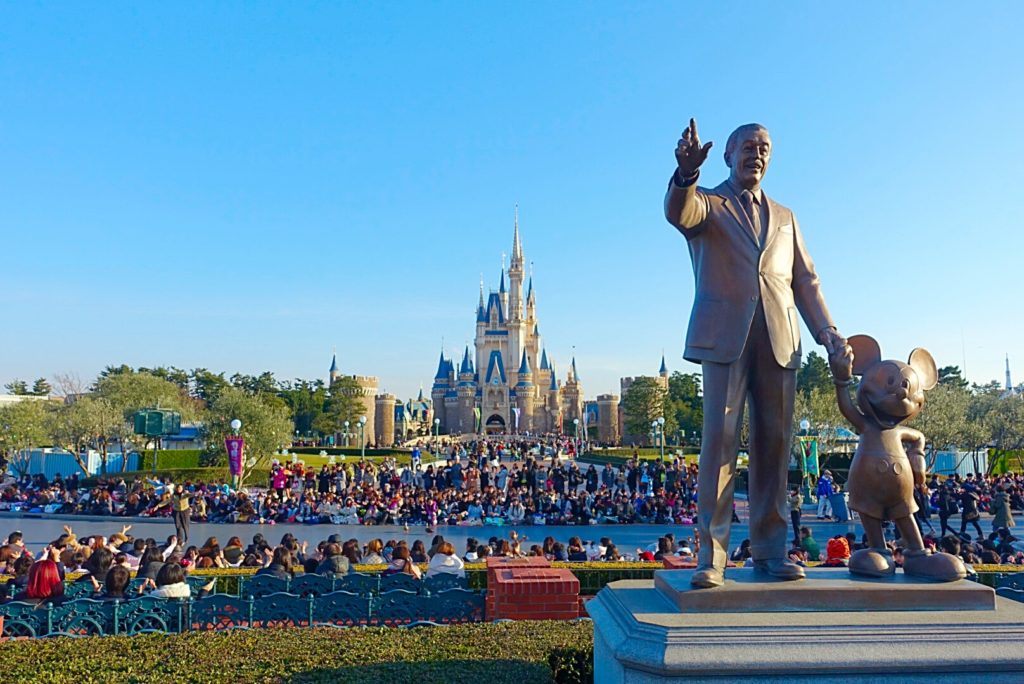
Reflections on Japan
Leaving your comfort zone to immerse yourself in different cultures is often rewarded with learning opportunities, new friendships and memories forever cherished. Some of the most friendly people I’ve encountered in the world were in the Land of the Rising Sun.
We were treated so warmly in Japan, especially by our hosts in Osaka & Nara.
I glanced toward the heavens with an ironic smile as we boarded our flight to leave Tokyo. I liked to think my late U.S. Navy veteran grandfather, Chic, who fought in the Pacific Theatre of WWII, was smiling back at me.
Our 8-day Itinerary:
- Two nights in Tokyo (stayed at APA Hotel – Shinbashi Onamiron)
- Two nights in Osaka (stayed in “love hotel” – don’t recommend); day trip to Nara
- Two nights in Kyoto (stayed at Grand Fine Kyoto Okazaki – affordable upscale “love hotel;” would stay there again
- Two nights in Chiba (stayed at AKA Hotel)

